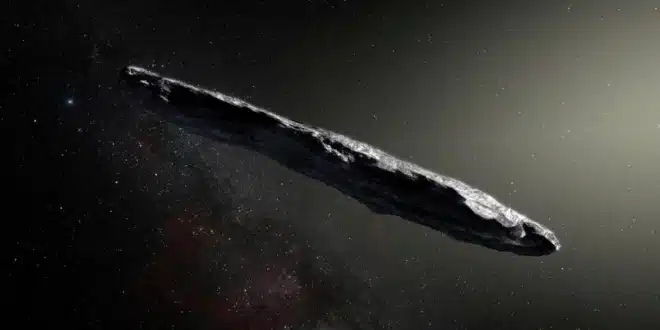A newly discovered object hurtling through space has sparked a wave of speculation among scientists, with some suggesting it could be an alien spacecraft. Measuring between 10 and 20 kilometers in width—roughly the size of Manhattan—the object, designated 3I/ATLAS (formerly known as A11pl3Z), is currently moving toward Earth at more than 60 kilometers per second. Its closest approach to the Sun is expected in late November 2025, a timeframe that some researchers warn could conceal suspicious behavior.
A Hypothesis Rooted in Possibility, Not Certainty
In a recent, yet-to-be-peer-reviewed paper, scientists including Harvard astrophysicist Avi Loeb, along with Adam Hibberd and Adam Crowl from the UK-based Initiative for Interstellar Studies, raised the provocative possibility that the object may be an interstellar probe—potentially designed by intelligent extraterrestrial beings. The authors note that its trajectory and timing would make it difficult to detect if it were to perform sudden high-speed maneuvers.
The object was initially identified by the ATLAS survey telescope in Río Hurtado, Chile, part of a global network designed to detect potential asteroid threats to Earth. Its hyperbolic path—indicating that it likely originates outside our solar system—has drawn comparisons to the 2017 object ʻOumuamua, which Loeb famously speculated could have been artificial in origin.
Concealment and Approach: Why November Matters
The researchers suggest that November 2025 is critical, as that is when the object will make its closest approach to the Sun. During this time, the object would be hidden from Earth-based observatories, meaning if it were to perform a covert approach or directional change, it could go unnoticed until it’s too late.
They point out that if the object is under intelligent control, this window provides an ideal opportunity for it to mask its true trajectory.
A Thought Experiment—Not a Prediction
Despite the dramatic implications, the study’s authors are clear: they are not asserting that an alien invasion is imminent. Instead, the paper explores a “testable hypothesis”, emphasizing that while they don’t necessarily believe the scenario will unfold, the possibility is worth examining scientifically.
“This paper is contingent on a remarkable but, as we shall show, testable hypothesis, to which the authors do not necessarily ascribe,” the study notes. Still, the implications, should it prove correct, are significant. The authors write that if the theory holds, it could have serious consequences for humanity, potentially requiring defensive countermeasures—though these may ultimately be ineffective.
The Bigger Picture
Speculation about alien life and the origin of interstellar objects continues to stir debate within the scientific community. Loeb, in particular, has been a polarizing figure for his willingness to challenge mainstream views and explore extraterrestrial theories with rigor. The appearance of 3I/ATLAS adds another layer to the ongoing conversation about how we detect, interpret, and respond to unusual phenomena from beyond our solar system.
While there is no immediate cause for alarm, this discovery underscores the importance of preparedness, surveillance, and open-minded scientific inquiry in the age of interstellar exploration.


